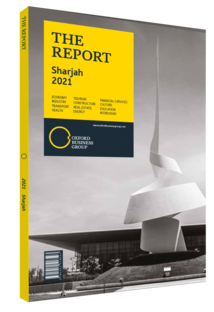How transition bonds can fund companies’ sustainable activities
As companies look to shift towards more environmentally sustainable operation, those in fossil fuel or heavy-polluting sectors are increasingly turning to transition bonds – a relatively new class of debt instrument used to fund a company’s transition towards reduced environmental impact or lower carbon emissions. They are often issued in large carbon-emitting industries that would not normally qualify for green bonds, such as oil and gas, iron and steel, chemicals, aviation and shipping. In the UAE, for example, Etihad Airways issued a $600m sukuk (Islamic bond), which was linked to its carbon-reduction targets. The airline is committed to net-zero carbon emissions by 2050 and a 50% reduction in net emissions by 2035. Amid a heightened awareness of the need to reduce carbon emissions, many expected transition bonds to play a large role in global financial markets in 2021. However, data compiled by BloombergNEF found that, as of mid-May 2021, just six had been issued. A total of 11 were issued during 2020 as a whole, according to non-profit organisation Climate Bonds Initiative (CBI), so the 2021 figure to May did not represent a considerable increase. The deals in the first half of 2021 included a $780m issuance by the Hong Kong branch of Bank of China in January for projects aligned with the country’s goal to achieve carbon neutrality by 2060, and the $300m sale from Hong Kong’s Castle Peak Power in February to help construct a gas turbine unit at a power station in the area. Elsewhere, in January the European Bank of Reconstruction and Development issued an A$280m transition bond to finance its portfolio of green transition projects, while in February Italian energy infrastructure company SNAM launched a €750m dual-tranche transition bond to help meet its goal of carbon neutrality by 2040.
Appetite for Change
There are some signs that transition bonds will play a more prominent role. In February 2021 the London Stock Exchange announced the establishment of a transition bond segment in its sustainable bond market, while there have been calls for Japan’s Ministry of Economy, Trade and Industry to introduce a goal of selling 30 transition bonds by 2023. Significantly, in May 2021 the Asian Development Bank (ADB) announced that it would no longer fund coal mining or oil and natural gas exploration and production. While this was a blow to companies active in fossil fuels, the announcement was an encouraging sign for the future of transition bonds in emerging markets, as the bank noted that it would continue to provide financial support for plants transitioning to cleaner solutions. “ADB will support developing member countries to mitigate the health and environmental impact of existing coal-fired power plants and district heating systems through financing of emission control technologies,” it said in a statement. Analysis from the CBI released in April 2021 found that, despite the severe economic impact of Covid-19, a record $700bn in green, social and sustainable finance was issued in 2020 – almost double the $358bn in 2019. Indeed, in March 2021 S&P Global predicted that transition finance could account for $1trn of the estimated $3trn in annual funding needed to meet long-term climate goals.
Transition-washing
Although many observers are optimistic about the benefits of transition bonds, others are sceptical about whether the vehicles will bring about the expected outcomes. A common criticism revolves around how ambitious the projects that many transition bonds back are, while the absence of clear international standards raises concerns about the potential for “transition-washing” by companies. To help address the latter point, in December 2020 the Switzerland-based industry trade group International Capital Market Association published the “Climate Transition Finance Handbook” to provide a framework for transition strategies. The guide, which aims to create general rules for transition-themed green bonds and sustainability-linked bonds, stated that bonds with the transition label should clearly stipulate how the funding will be used to support the Paris Agreement.
You have reached the limit of premium articles you can view for free.
Choose from the options below to purchase print or digital editions of our Reports. You can also purchase a website subscription giving you unlimited access to all of our Reports online for 12 months.
If you have already purchased this Report or have a website subscription, please login to continue.

